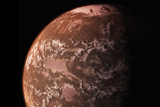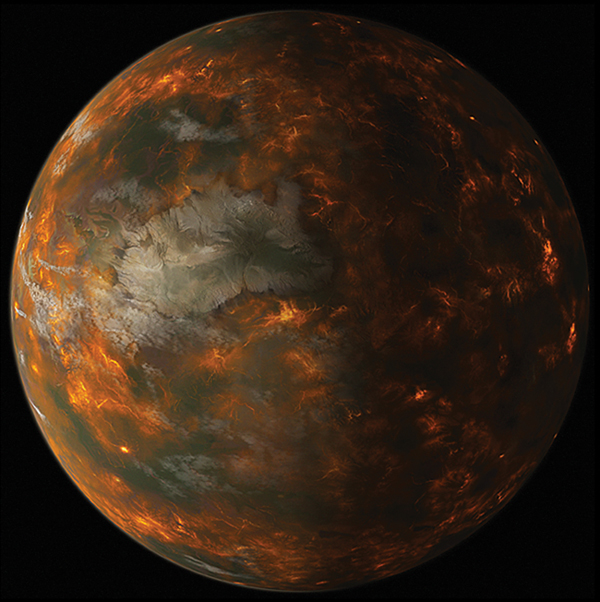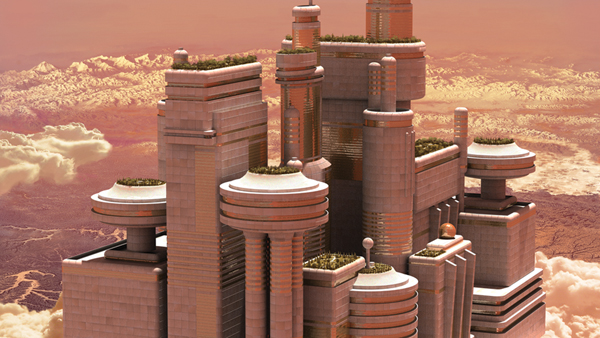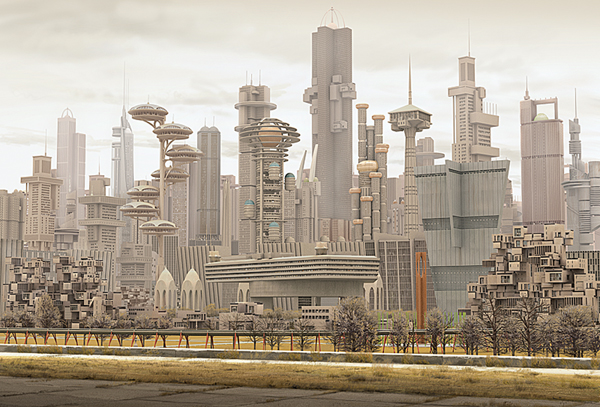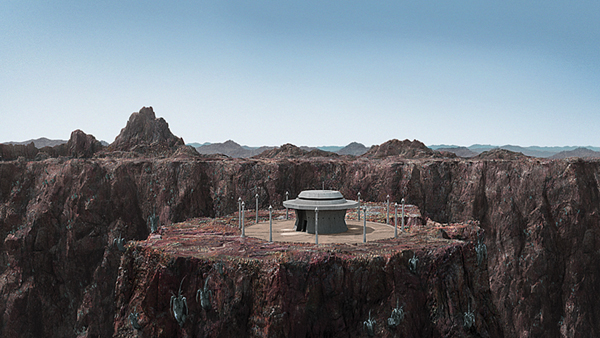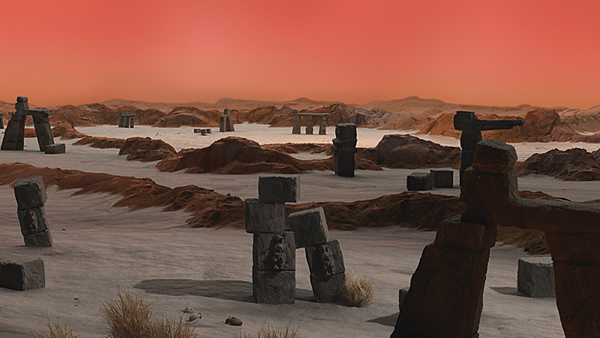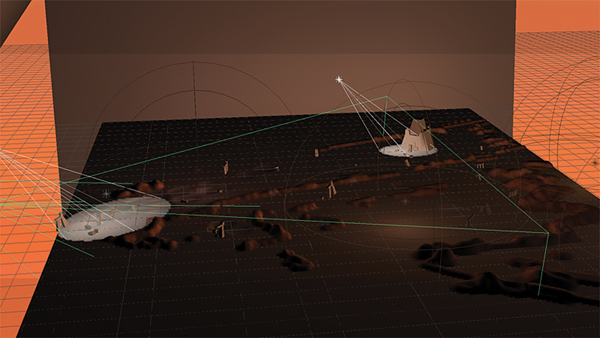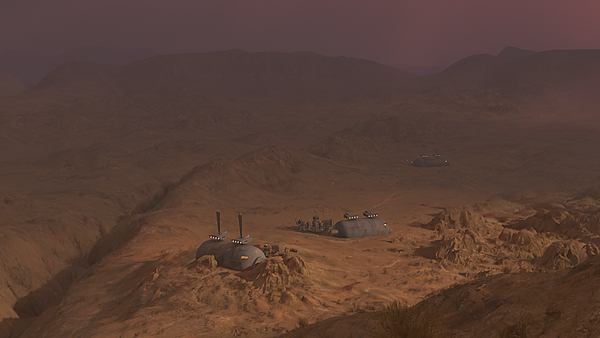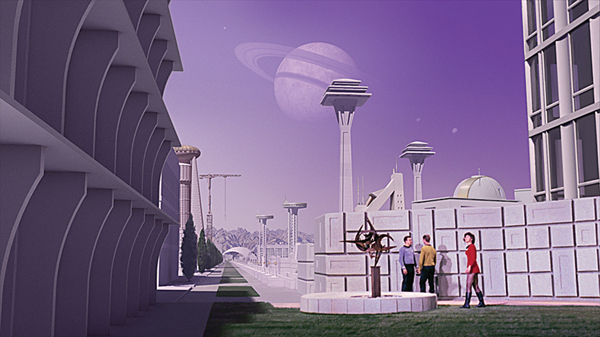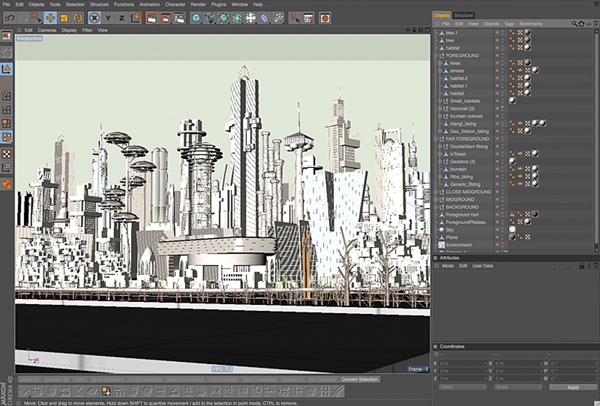| Generation’ art director Michael Okuda, ‘Star Trek’ producer Dave Rossi and VFX supervisor Neil Wray, Gabl’s work centred on improving production values to modern HD standard across all 54 episodes, which contain original shots that were filmed with very simple lighting setups and hastily painted and poorly lit backdrops. Gabl was responsible for updating the look of backgrounds, recreating 33 establishing shots and scene extensions, 47 planets and several paintings of nebulae and other planetary objects.
Inventing the camera
A major challenge was the lack of the basic data that is critical for creating visual effects, such as the type of camera and focal length, used to match the virtual camera to the scene. “If I can't get camera data from the original shot to recreate my virtual camera in 3D, I have to guess the aperture of the camera based on my personal experience, on clues like perspective and distortion, and so on.
“Then I have to fine-tune the virtual camera, looking through it onto my 3D scene that is embedded in the shot, and change the focal length, angles, position, banking, until the 3D element looks right in the scene,” said Max. “While this is a typical problem at the start of almost every 3D matte painting, many times I can get info on focal length, aperture width and other camera data, including height and angles. For Star Trek, though, I had nothing.”
Workflow
Niel Wray and Max would meet or conference call with Michael and associate producer Denise Okuda, and sometimes Dave Rossi, to get their input before starting. Michael frequently gave them detailed notes and digital sketches of what he envisioned. “I would model the sets and also import modelled elements, mostly from Neil, who is a great modeller and a Trekkie. Then I created the textures and lighting and rendered the scene.
“If it was a locked camera shot, I refined the finished render in Photoshop before I passed it on for review. For moving shots, I finished the textures in MAXON Bodypaint 3D. The latter was many times the case with the planets. Once the painting was approved, I passed it on to compositing. I was also responsible for art directing the shot so that it would integrate seamlessly back into the film.”
Mix and Match
Main vendor CBS Digital were focused on updating the outdated visual effects, the exterior shots of the USS Enterprise, several planets and some backgrounds on a virtually all Autodesk pipeline, especially Maya.
Gabl created many of the matte paintings of the buildings and planets from scratch, from 3D model to final render, directly in CINEMA 4D. He also worked in some cases with models built in Maya at CBS Digital, which he imported into 4D to light, texture, and render. “I had no problems importing the files, and I usually matched the originators' size units, so the sizes matched. The files came in just right most of the time. Problems mostly originated in normals facing the wrong way, but I sent them back for cleanup or did it myself.”
Some of the paintings were completely new overview shots while others were based on original Star Trek footage, with subtle enhancements blended into existing images. He actually found the latter was more difficult because he had to match something that sometimes doesn’t look quite right, and try to make it right.
Painting Mode
“I only bought the CINEMA 4D modules I needed. For Star Trek I only needed the main application, Bodypaint, and Advanced Render. I didn't need character rigging and Sketch&Toon for example, so we didn't have to buy those. Also, the interface is customisable, and I have created streamlined working environments for all kinds of tasks. The app almost never crashes, and if it does, it’s for an obvious reason.”
Max also said that the Projection Man feature was handy, for setting up camera projections quickly and allowing him to look directly at the textured 3D object when touching up textures and seams in painting mode. When creating virtual sets, he could switch back and forth between modelling, projection painting and texturing within the same application.
Texture Library
Over the course of the project, Gabl built an extensive library of textures that could be modified, as needed, allowing him to turn a blue ocean green or vegetation from green to brown, saving time. By the end, he reckoned he had at least one multi-layered texture per planet, sometimes two. “I could paint textures directly onto the planets with BodyPaint 3D and see the results right away rather than having to wait for them to render before entering Photoshop, which proved to be a real time-saver,” said Gabl. The planets rendered at 4000 x 4000 pixels.
While Gabl worked on planets and establishing shots, another team of modellers, animators and texture artists worked almost exclusively on a new CGI version of the fictional starship, Starship Enterprise. Once the various matte painting elements were finished, CBS Digital’s team of compositors inserted them into the footage for the finished look.
Software Support
Consistency and maintaining style and values was an issue for the two-year project. The fairly straightforward sharing and importing elements from CBS’ predominantly Maya environment was a great help. “I only represented part of the pipeline. I was importing elements into C4D most of the time and from there took them all the way through. It's also great that 4D fully supports Photoshop files with everything intact.
“Photoshop is one of the oldest apps for visual effects and is used everywhere. I would like to see more support for Photoshop files in other 3D applications. Usually when I export textures to other apps, I have to flatten the Photoshop files and export a single file for every layer and every alpha channel. It takes a lot of time.”
Seasons 1 and 2 of ‘Star Trek: The Original Series Re-mastered’ were released by CBS/Paramount Home Entertainment earlier in 2009. Season 3 went on sale in December. For more information about Max Gabl visit
www.maxgabl.com/Content/Matte_Paintings.html
www.maxon.net
|
Building the Planets
For Planets that Max re-worked or created were specified to comply with existing locations and planet set shots in corresponding episodes. If audiences saw a red sky and a sandy soil on set, the planet had to look like that from the outside, too. Otherwise, he had a lot of freedom as an artist and appreciated working with Mike Okuda. “He created almost all graphics for Star Trek and was the architect of many of the buildings. He's got the Star Trek look down to a science."
Once Max Gabl had the basic parameters of a planet, it was up to him to get its look right.
"First, I was given surface type, cloud type, atmosphere colour, percentage of water bodies, special features and so on. I followed up with my own questions and determined the feasibility of the assignment. For example, how would colours and detail on set translate into a realistic view from space? Would this confuse viewers? On occasion, the producer actually wanted to see evidence of tall buildings on the planet from space.
In the end, Max’s job was one of artistic compromise that could realise the director’s vision and satisfy the fans. “I projected the textures onto 3D geometry, which was the fastest solution. Painting a sphere from scratch, with the constant, mathematically correct shifting of perspective and falloff, proved to be quite a task, sometimes weeks of work. I often modelled and lit entire scenes in 3D and then painted them over. The average planet took about two days.
While the new planets were not created from scratch, each went through several design steps. "I started with templates from NASA that I manipulated until I had something to work with. Then a lot of 'painting from scratch' was added to the mix, that is, painting with a pen on a Wacom Tablet. Many of the initial textures that I created were later modified and used for new planets. When I had the textures ready, I projected them onto 3D spheres.
“I obtained mountains and valleys for the elevations from geological web sites, and I painted over and modified them to be used as ‘bump and displacement’ maps. This is how the three-dimensional look of my planets was created. Harmonising the colour, textures and the displacement maps was a lot of work. The clouds, all of which are painted, consist of alpha channels that I projected on a second, slightly larger half-transparent sphere, for the illusion of a cloud layer hovering above the planet. Finally, I painted over the projections once again, to eliminate the '3D look' and to add some extra details."
|
